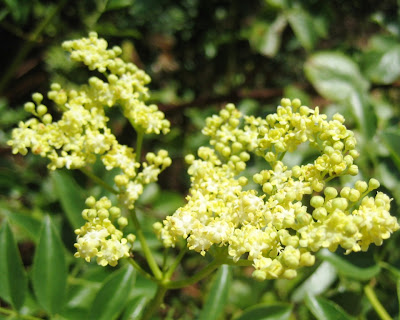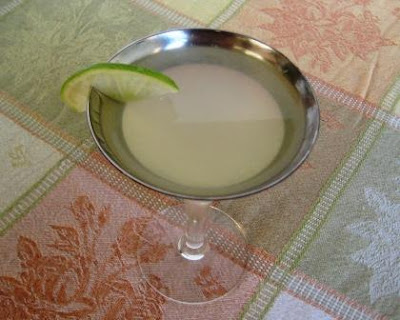 The Elderberry is a pretty little tree with pinnate leaves and clusters of white flowers. It's a nice tree for a small urban garden, because it doesn't get too big and because the pretty flowers of spring are followed by autumn berries. Nurseries have selected several cultivars of elderberries for their elegantly cut leaves, or striking foliage in bright gold or deep purple-black.
The Elderberry is a pretty little tree with pinnate leaves and clusters of white flowers. It's a nice tree for a small urban garden, because it doesn't get too big and because the pretty flowers of spring are followed by autumn berries. Nurseries have selected several cultivars of elderberries for their elegantly cut leaves, or striking foliage in bright gold or deep purple-black.
In Europe, the native elderberry is Sambucus nigra. In folklore, it's said to ward off evil and protect you from witches. That may be due to its use in folk medicine. It's prized for its flowers and fruit, both of which are traditionally made into cordials, syrup, or wine. The berries are said to help combat flu symptoms, containing antioxidants called flavanoids, which stimulate the immune system, and anthocyanins, which have an anti-inflammatory effect. The berries are also loved by birds, so if you grow an elder tree in your garden, you will be doing your part to support wildlife in your neighborhood.

Here in California, our native elderberry is Sambucus mexicana, and it grows throughout the Santa Monica mountains. Like its relatives, its a smallish tree with pretty corymbs of white flowers, followed by clusters of small dark berries, their skin touched with a frosty bloom like that on plums and blueberries.

The berries are smaller than the size of a pea.
This summer I saw so many of them I decided to pick some and experiment with making a syrup.

It takes a lot of elderberries even to fill a cup.
It was kind of a pain separating the tiny berries from the stems and twigs, but since the woody parts of the plant are said to be (mildly) toxic, I was pretty diligent about it. I used a recipe from David Lebovitz's site (scroll to the bottom for the recipe), and ended up with enough syrup to fill a leftover mustard jar.

I wasn't quite sure what to do with it, but then I thought of something.

Vodka martinis with a squeeze of lemon and a droplet of elderberry syrup? How about using a stalk of lavender as a stir-stick? Not too bad.
Elderflowers are also made into concoctions, and during a spring trip to New York City, we noticed that several trendy restaurants had summer cocktails featuring a liqueur made from elderflowers.
St. Germain is a hot new item on the backbar in the fancy cocktail lounges of New York and Hollywood. It's said to be made from wild elderberry flowers gathered in the French Alps by old men who deliver them on bicycle to the markets, where they are processed with eau de vie and cane sugar. The resulting liqueur is a delicate, fragrant thing, pale gold in color and packaged in an ornate and heavy bottle costing $39.99 at our local fine wine emporium.

I think I might wait for next spring's blooms and see if I can gather enough blossoms to make my own elderflower cordial. Here's a recipe worth trying if you don't want to spend $39.99.

On the other hand, there's nothing like a French gimlet made with flowers picked by old French men on bicycles.
If you want to know more about elderberries, visit this site Here.
2 comments:
oooh, needless to say, this prickly pear tini woman is very enthusiastic about your idea. funny to read this now. I recently held a jar of elderberry jelly and wondered, "what does elderberry look like?" Now I know!
Hmm...I really didn't know what they were used for. I love the look of the martini, not so sure I'd love the taste!
Post a Comment